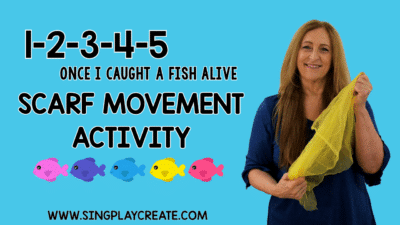
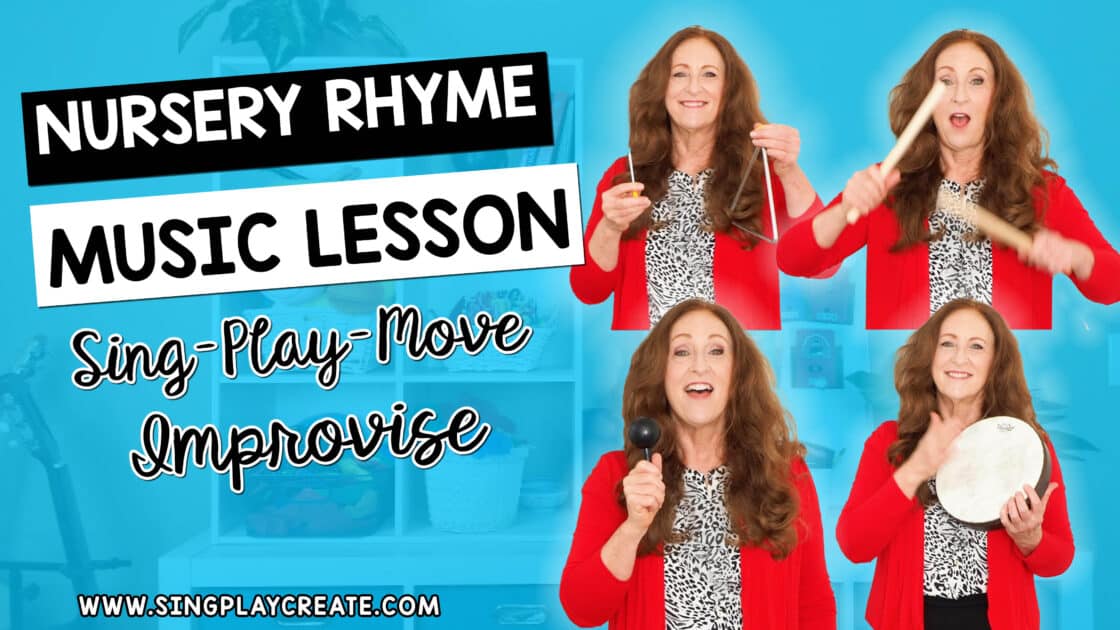
In this blog post I’m sharing ideas on how to make a nursery rhyme a music lesson. Read this post to get specific ideas on teaching steps for beat, rhythm, playing instruments, creating, and improvising activities.
In this post I’m using the song “1-2-3-4-5”. In the video I show all of the activities. You may want to refer to the video to see how it looks with all of the instrument parts.
I made a YouTube video of the song that you can use to teach the song.
You can also find this song on your favorite music channel.
Sing the Song/chant the Rhyme.
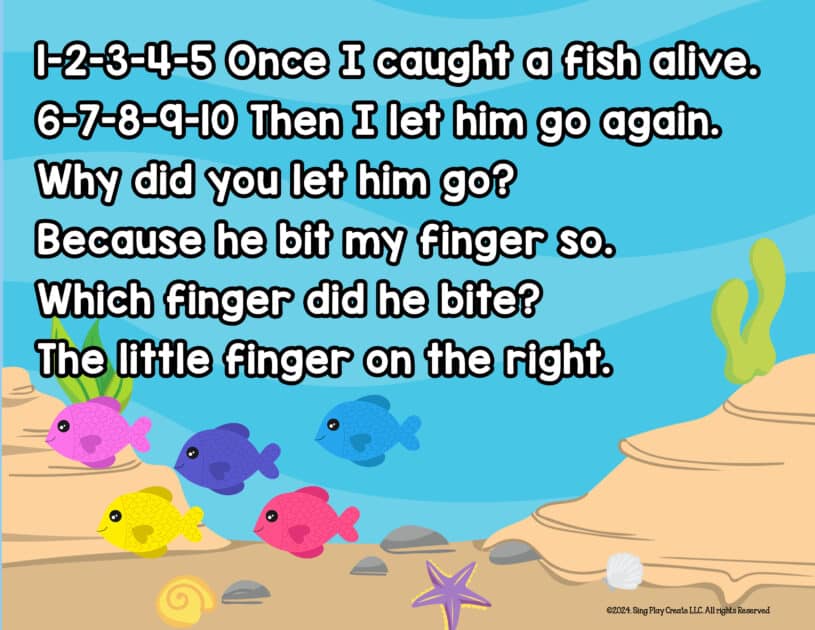
Have students pat the beat as they listen to the song.
Then I’ll have them discuss the story.
Review the rhyming words.
To teach the lyrics, I’ll have them clap the rhythms.
Divide class into 2 groups:
Pat the Beat and Clap the Rhythms
Switch parts
Try using movement to show the dynamics of the music.
Play the song using a variety of dynamics and ask students to show them through body movement.
Do or create the hand actions for the song that express LOUD and SOFT.
Ask students to show LOUD and SOFT body movement. Use TIP TOE for soft and STOMP for LOUD, or crouch and jump type movements.
You can also use a scarf to show dynamics.
1-Try using these instruments to show different music concepts.
Beat drum
Rhythm-rhythm sticks
Play a bordun on alternating notes
2-Sing the song while playing a rhythm play along.
Mute the video and sing the song while clapping the rhythms.
3- Ask students to create an Ostinato and have a small group play that part as the rest of the class sings and plays the nursery rhyme.
3- Ask students to improvise sound affects as the other students sing and play the song.
Ask students to choose instruments that sound like “fish in the ocean”.
Use the instruments on specific words in the song.
In the video I use a triangle for the counting words, a shaker for fish/he/him. More instruments can be used to imitate sounds of the water, other fish and the pain when the finger get’s bit!
If you’re using this activity in a smaller classroom or at home, you may want to check out this instrument bundle using my affiliate link on Amazon.
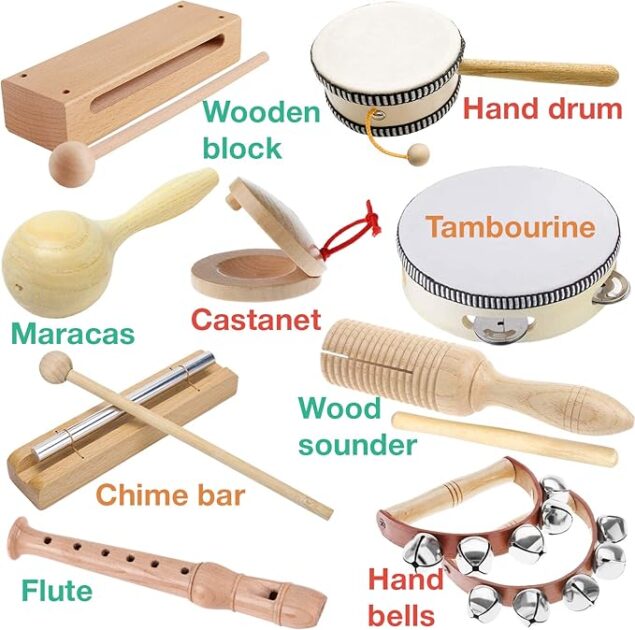
NEED RHYTHM STICKS?
Here are some ways you can scaffold the activities so that each grade level is learning the appropriate skills.
Create an Ostinato
Play the melody by ear
Change the word “fish” and choose an instrument to play on that word only.
Here are some resources that support these activities.
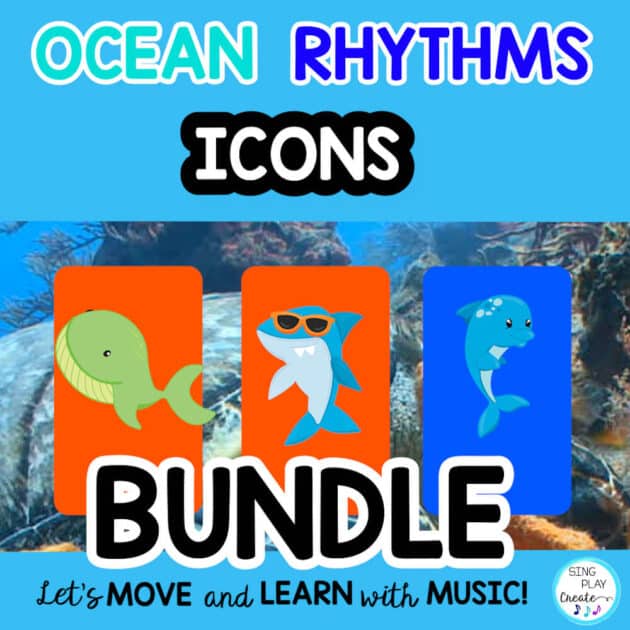
Rhythm Activities BUNDLE {ICONS} Video, Google Apps, Flash Cards Ocean Friends TPT LINK
Rhythm Activities BUNDLE {ICONS} Video, Google Apps, Flash Cards Ocean Friends WEB SHOP LINKS
Ocean Friends Rhythm Icon Play Along Video and Presentation Play Along
Ocean Friends Rhythm Icon Google Apps Activity
Ocean Friends Rhythm Icon Posters and Flash Cards
Ocean Friends Rhythm Pattern Icon Flash Cards
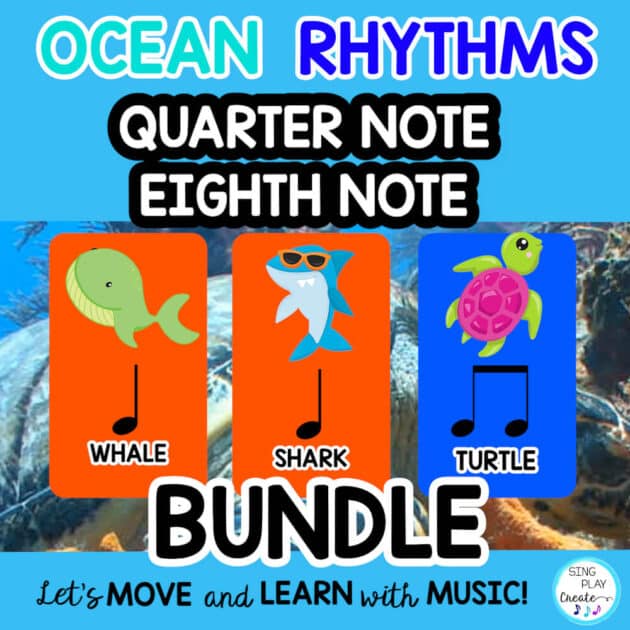
Rhythm Activities BUNDLE: {Quarter & Eighth Notes} Ocean Friends TPT LINK
Rhythm Flash Cards, Posters, Games: {Quarter, Eighth Notes} Ocean Friends WEB SHOP
Rhythm Google Slides Drag & Drop Activity: {Quarter, Eighth Notes} Ocean Friends WEB SHOP
Rhythm Pattern Flash Cards Activities {Quarter & Eighth Note} Ocean Friends WEB SHOP
Rhythm Play Along Video and Activities: {Quarter, Eighth Notes} Ocean Friends WEB SHOP
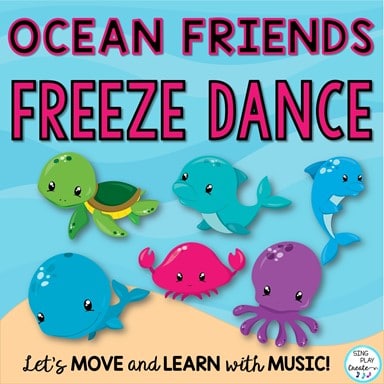
Ocean Friends Freeze Dance, Brain Break, Movement Activity with Video TPT LINK
Ocean Friends Freeze Dance, Brain Break, Movement Activity with Video WEB SHOP LINK
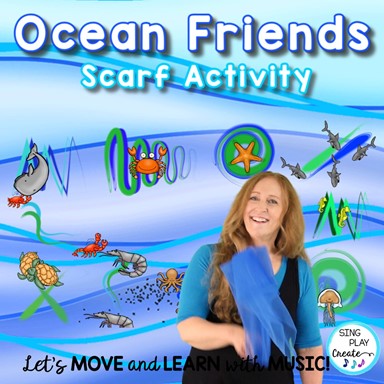
Ocean Friends Scarf Activity, Brain Break, Movement Activity Video TPT LINK
Ocean Friends Scarf Activity, Brain Break, Movement Activity Video WEB SHOP LINK
READ THIS POST for more music lesson activities.
HOW TO TEACH BEAT AND RHYTHM IN MUSIC CLASS
Music Activities to Teach High and Low
Thanks for reading this post.

Please share this post.
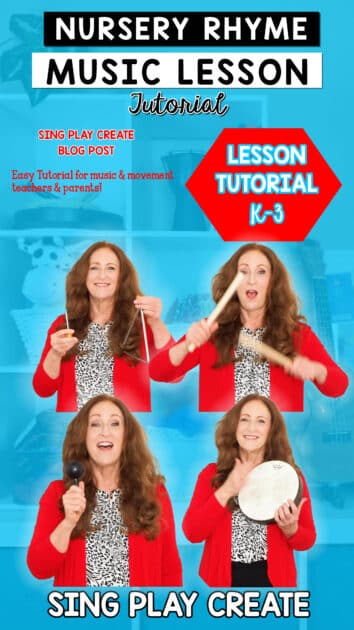
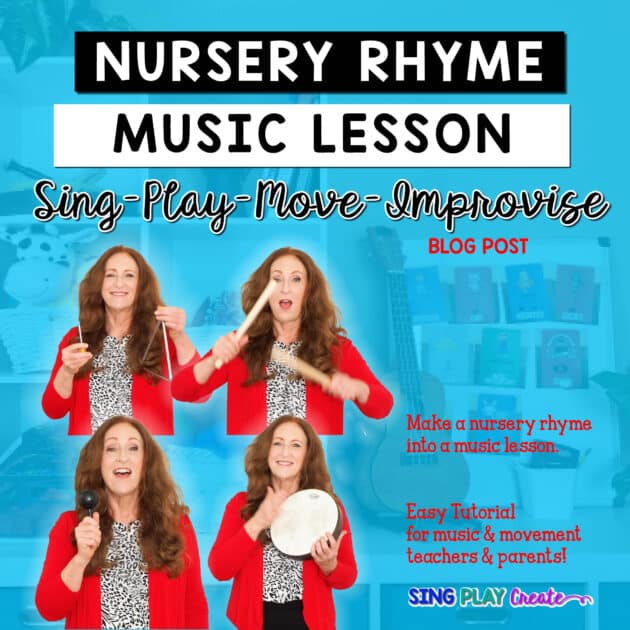

Hi there! I’m Sandra, one of the authors behind Sing Play Create. My goal is to provide teachers with interactive resources and activities to improve the effectiveness of their teaching and enhance student learning.
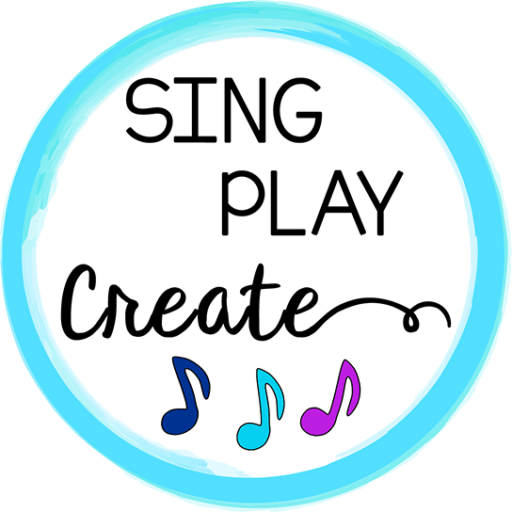
© 2022 Sing Play Create. All Rights Reserved.